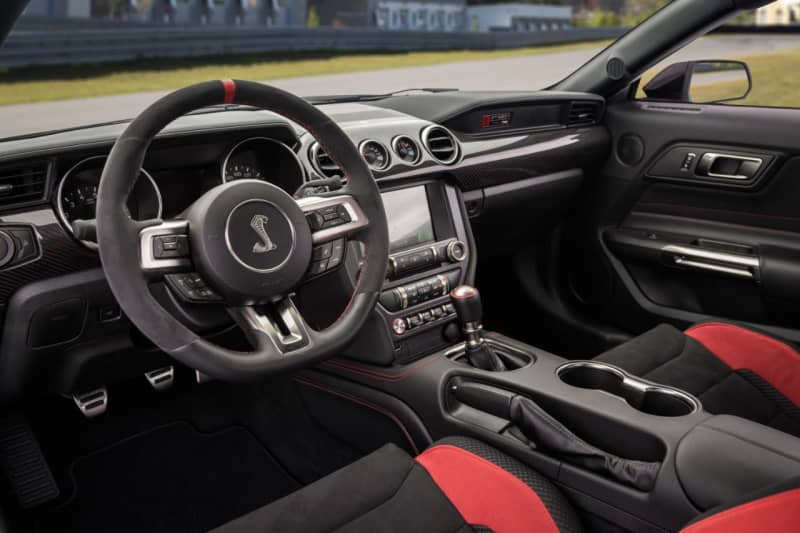
Ford Motor Company has moved to patent an electronic clutch system that would allow drivers to manually shift gears without having to worry about clutch engagement. Unlike conventional clutch actuation, Ford’s idea would do away with the physical connection between the clutch pedal and the throwout bearing, instead, clutch operation would become an electronic control based on sensor inputs to an algorithm. It could mean a new feature for the upcoming S650 Ford Mustang, an updated Ford Bronco, or a hot hatch like the Focus ST.
According to the patent abstract discovered by MC&T within the USPTO database, the system would feature a control module designed to automatically actuate the clutch allowing the driver to simply shift gears by moving the gear stick alone. The module would begin to disengage the clutch after a sensor in the shift knob tells it the driver has grasped the lever and has begun to move it through the detent, it would then reengage the clutch when the vehicle understands the shift has been completed.

Vehicles using this type of electric clutch system wouldn’t need to include a clutch pedal, however, Ford does state vehicles could still include a clutch pedal, it would simply be connected to the control module instead of physically linked to the clutch master cylinder–much the same as throttle pedals are no longer linked directly to the throttle plate. This could be one way of introducing an electronic clutch system to the masses without too much backlash from purists.
Instead of a clutch pedal, another option outlined in the document could be an override button on the shifter knob in order to manually actuate the clutch. The override, either via pedal or button, would be required for quick shifting, and means dumping the clutch would still be possible. The document even states clutch pressure could be sensed by how much pressure the gear lever is grasped with, this would allow modulation or slipping the clutch as a function of your grip.

It’s important to note that this system will still employ a hydraulic connection between the master cylinder and slave cylinder to move the throw-out bearing axially towards or away from the diaphragm springs on the pressure plate. Ford says this type of system could be employed in longitudinal manual transmissions found on traditional rear-wheel-drive vehicles like the S650 Ford Mustang, or all-wheel-drive setups like the Ford Bronco. Front-wheel-drive transaxles as used in vehicles like the Fiesta and Focus are fair game as well. The mechanical components of the transmission itself would be unchanged, it would still employ constant mesh gears, synchronizers, speed gears, and shift forks much the same as today’s manual gearboxes.
One of Ford’s goals with this electronic clutch system is to do away with some of the negative attributes associated with driving a manual transmission vehicle day-to-day, a large part of the reason we’ve watched manual take rates decline over the past 30 years.
All that said, there appears to be no timeframe for Ford to implement an electronic clutch of this nature, but based on our interpretation of the patent, a system like this wouldn’t take much in terms of mechanical engineering to bring to market, it’s basically just an algorithm. And if such a feature ends up on the S650 Mustang, remember, you read it here first.

